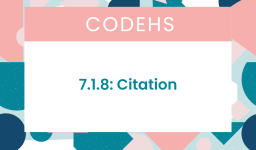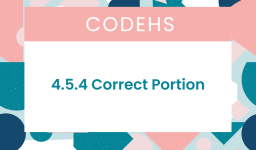Question: Which Of The Following Is A Good Practice To Prevent Spillage?
Quick Answer: Always check to make sure you are using the correct network for the level of data.
Broad Description
While using the correct network for the level of data is important for data security, it doesn’t directly prevent spillage. To prevent spillage, consider the following good practices:
- Ensure proper access controls: Implement role-based access control (RBAC) to limit access to sensitive information on a need-to-know basis.
- Encrypt sensitive data: Use strong encryption algorithms to protect sensitive information both in transit and at rest.
- Regularly update software and systems: Keep all software, operating systems, and firmware up-to-date to minimize vulnerabilities that attackers could exploit.
- Implement strong authentication mechanisms: Use multi-factor authentication (MFA) to protect user accounts and sensitive systems.
- Maintain a strong security culture: Provide regular training and awareness programs to educate employees about the risks of information spillage and the importance of following security protocols.
- Monitor network activity: Regularly monitor network activity to detect any unauthorized access or potential data leaks.
- Use data loss prevention (DLP) tools: Implement DLP solutions to identify and block potential data leaks before they happen.
- Establish incident response plans: Develop and maintain a robust incident response plan to quickly identify, contain, and remediate any information spillage events.
- Regularly audit security controls: Perform periodic security audits to identify and address potential weaknesses in the organization’s security posture.
- Establish and enforce policies for remote work and personal devices: Ensure that employees follow proper security practices when working remotely or using personal devices to access sensitive data.
- Secure disposal of data: Implement secure data deletion and disposal policies for physical and digital media to prevent unauthorized access to sensitive information.
- Network segmentation: Segregate your network into separate zones based on the sensitivity of the information and the level of access required. This can help limit the potential damage from a security breach.
- Regularly conduct vulnerability assessments and penetration testing: Identify and address potential security vulnerabilities by conducting regular assessments and simulated cyberattacks.
- Backup and disaster recovery planning: Develop and maintain a robust backup and disaster recovery plan to ensure the availability of critical data in case of a security incident or system failure.
- Security information and event management (SIEM): Implement SIEM systems to collect, analyze, and correlate security event data from various sources, enabling faster detection and response to potential threats.
- Implement least privilege principle: Limit the permissions granted to users, applications, and systems to the minimum necessary for performing their tasks to reduce the risk of unauthorized access.
- Manage third-party risks: Assess and monitor the security posture of third-party vendors, partners, and contractors who have access to your organization’s sensitive information.
- Implement intrusion detection and prevention systems (IDPS): Deploy IDPS solutions to detect and prevent unauthorized access, malware, and other malicious activities on your network.
- Secure communication channels: Use secure communication protocols like TLS or VPN to protect data transmitted over the internet or other networks.
- Create a culture of continuous improvement: Encourage an organizational mindset focused on learning from past experiences, staying up-to-date with the latest cybersecurity trends, and continuously improving security measures.
READ MORE: Cyber Awareness Challenge Answers



